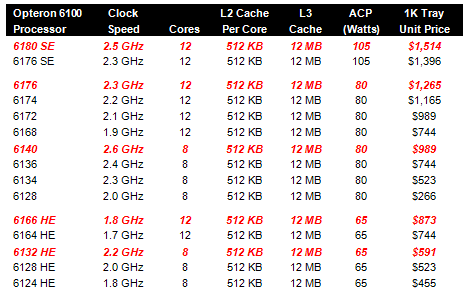|
The GPU Megathread is here, this thread is about CPUs, APUs, and AMD platforms in general. Don't loving buy an AMD FX-series CPU. Don't loving buy an AMD FX-series CPU. Bulldozer delayed until late July due to disappointing performance AnandTech posted:Just above Llano we will have the long awaited Bulldozer CPU. AMD originally wanted to launch Bulldozer at Computex but performance issues with its B0 and B1 stepping chips pushed back the launch. Now we're looking at a late July launch with B2 silicon, but performance today is a big unknown. Apparently the performance of B1 stepping silicon doesn't look too good. Also from that article, Info on the 9-series chipset: AnandTech posted:To differentiate AM3+ from AM3 motherboards AMD is releasing a new chipset: the 9-series. Functionally the 9-series chipset is no different from the 8-series that it replaces; it'll simply be used on AM3+ boards exclusively. What The gently caress is Bulldozer? Bulldozer is the next-generation micro-architecture and processor design developed from AMD. Bulldozer will be the first major redesign of AMD’s processor architecture since 2003, when they launched their K8 (Athlon 64/Opteron) processors.  Technical poo poo: Technical poo poo:  Bulldozer core "modules" will consist of two 4-pipeline cores that share a Float Point Scheduler and two 128-bit FMACs. Since a very small amount (outside of HPC) is FP calculations in today's code, the shared FP scheduler allows some significant power savings. The shared dual 128-bit FMACs can be used by each core or doubled up and used as a 256-bit FMAC. For this to be beneficial however, it will have to be specifically coded for. These cores also share an L2 cache. These modules can be arranged and connected via HyperTransport Bus facilities build multi-core processors. The 6000 series server processors will have 12 to 16 cores, or 6 to 8 modules. The 4000 series will have 4 to 8 cores. Server side chipset will be identical to what is currently on the market and G34 (6000 series) and C32 (4000 series) sockets will accept these server processors. These processors will work inside the exact same thermal envelopes as the previous processors, but will of course have up to double the cores. Block diagram:  "Significant enhancements" have been made to the memory controller that will represent a substantial increase in memory throughput, but that is all that would be said on the matter. It was interesting to hear AMD compare its Bulldozer module to current Intel HyperThreading architecture and you will see the comparison made on the slides below. AMD seems to be of the mind, "Why do we need something akin to HyperThreading when we can add an additional core to our module for about a 5% increase in die size?" AMD kept with the 2-core module to HyperThreading comparison throughout the talk. More low power states and more advanced and granular clock gating will also be part of Bulldozer and upcoming Northbridge parts for the desktop. Expect to see two channels of DDR3 memory per module as well. As well a new modes of AMD's TurboCore technology that "overclocks" the processors. Just to reiterate: Each Bulldozer die will be made up of multiple modules. Each module has 2 integer cores and a shared FPU.
Don't get hung up on modules. They only exist to the designers and in powerpoint slides. They will not be visible to the system or to the software. The OS cannot see the module, it only sees integer cores. New Socket Time! Bulldozer uses the AM3+ socket for the desktop, and Sockets G34 (LGA1974) and C32 (LGA1207) will be used in serverland. AM3 boards will not take AM3+ CPUs AM3+ boards will take AM3 CPUs Let me reiterate that for you, just so we're absolutely positively unequivocally clear on this: AM3 board + AM3+ CPU? NO AM3+ board with AM3 CPU? YES The advantages of AM3+ are:
Motherboards So Far Announced:
Info on the 9-series chipset: AnandTech posted:To differentiate AM3+ from AM3 motherboards AMD is releasing a new chipset: the 9-series. Functionally the 9-series chipset is no different from the 8-series that it replaces; it'll simply be used on AM3+ boards exclusively. Known BD models:
Q/A Time:  Q: I'm trying to decide if I want to get a new motherboard and use my current processor until Bulldozer comes out or if I should wait and get the whole shebang when it drops? A: It is a great idea to spread out your spending, if you can. Get something from this list, it will be AM3+ compatible with a BIOS update.
Updated 5/31/11 Somebody fucked around with this message at 20:43 on Oct 11, 2012 |
|
|
|

|
| # ? Apr 25, 2024 07:50 |
|
Nonpython posted:Wait a little bit, my browser glitched out and ate some of the text. You know you could just not post the thread until you recovered the text right?
|
|
|
|
rsjr posted:You know you could just not post the thread until you recovered the text right? I do, it was all there, then when I posted, it was missing the tail end. It is fixed now, though.
|
|
|
|
Here's some early coverage of Bulldozer benchmarks that was discussed in the Sandy Bridge thread. In short, the line is that a Bulldozer CPU performs close to a Core i7 hex-core CPU. For reference, here are single- and multi-threaded benchmarks of current CPUs. Given that Bulldozer has 8 cores, it's not entirely surprising that it would be competitive with a 6 core CPU. It's always been expected that Bulldozer would put out excellent performance in heavily threaded integer that can take advantage of its cores, the real concern is how it performs in more typical workloads that depend more on the performance of each thread. There's also the possibility that the benchmark may not have been entirely fair, for example running an 8 CPU benchmark would max out a Sandy Bridge i7 or a Bulldozer, but would leave 4 logical CPUs unused on the Gulftown i7. Interestingly, in an 8 CPU test configuration, the Sandy Bridge i7 is exactly as fast as a Gulftown i7, thus probably as fast as an 8-core Bulldozer, all with only 4 physical cores. This would make it twice as fast core-for-core as Bulldozer, and AMD would really need to do magical things with clock speeds and Turbo to start to make up the difference. Turbo/Cool'n'Quiet have historically been problematic for AMD, so we'll see how well this all works out.
|
|
|
|
I've been anxiously awaiting this thread. Besides my little integrated Atom NAS I've personally never purchased an Intel CPU. I always end up looking at the huge price difference at the performance gap and wonder why people think they need to spend so much money on their computer. Here's to AMD reclaiming the performance crown, or at least staying very competitive this generation!
|
|
|
|
Alereon posted:the real concern is how it performs in more typical workloads that depend more on the performance of each thread.
|
|
|
|
I seriously can't believe it took AMD this long for it to come out with an all new design
|
|
|
|
Nonpython posted:With HyperThreading, the job scheduler needs to know how to deal with "full cores" and "shared cores." For instance, if you have 4 cores with HT, if you are only running 4 threads, you want them each spread out on to individual cores, you don't want all 4 of them sharing 2 cores while other cores are sitting idle. That is a relatively low level of scheduler complexity (relatively speaking.) But when 2 more threads come through, as you start sharing cores, you want to try to optimize the threads around execution. Let's say you have all 4 cores active with threads, 2 "heavy" threads and 2 "light" threads. If you need to "double up" the 2 new threads, you'd rather put them on the 2 cores that have light loads right now. So, this is a much more complex level of complexity. So, with HyperThreading, you have an added level of complexity. You have to think about WHERE to put threads vs. just looking for the next available resource. This isn't actually true. The schedulers aren't that complex, and it ends up being OK because each core has multiple functional units and can do more than one thing at once, so the rate of structural hazards blocking execution is very very low even with HT. That said, we have more transistors than we know what to do with nowadays so we might as well just go for more cores.
|
|
|
|
adorai posted:Does anyone really care about "typical" single threaded workloads any more? More and more apps are being written with multithreading in mind, and even desktop computing seems to be moving towards virtualization (see: XP mode). Going forward single thread performance will be less and less important across the board. Most of the money is made in the enterprise, where max memory and number of cores are king. Until Autodesk actually gets off their rear end and writes their software to utilize the hardware that has been in every computer for the last 6 years, per-core performance is still going to matter tremendously.
|
|
|
|
Very excited to see this come out, I did some work on the IF unit as an intern.chocolateTHUNDER posted:I seriously can't believe it took AMD this long for it to come out with an all new design I think when they started working on the project initial projections were late 2009 for production.
|
|
|
|
adorai posted:Does anyone really care about "typical" single threaded workloads any more? More and more apps are being written with multithreading in mind, and even desktop computing seems to be moving towards virtualization (see: XP mode). Going forward single thread performance will be less and less important across the board. Most of the money is made in the enterprise, where max memory and number of cores are king.
|
|
|
|
adorai posted:Does anyone really care about "typical" single threaded workloads any more? More and more apps are being written with multithreading in mind, and even desktop computing seems to be moving towards virtualization (see: XP mode).
|
|
|
|
Are there any AMD goons?
|
|
|
|
I jumped ship from AMD long ago, is this something that is going to compare with whatever Intel has coming around the corner?
|
|
|
|
BangersInMyKnickers posted:Until Autodesk actually gets off their rear end and writes their software to utilize the hardware that has been in every computer for the last 6 years, per-core performance is still going to matter tremendously. loving Autodesk. Even their newest installers suggest you disable UAC.
|
|
|
|
Aeka 2.0 posted:I jumped ship from AMD long ago, is this something that is going to compare with whatever Intel has coming around the corner? AMD's new mobile platform looks pretty sweet -- the fusion core thing with integrated graphics. That poo poo will definitely give Intel a run for its money when compared against Atom. Sandy Bridge beats Bulldozer, but Bulldozer will likely be cheaper and most people don't even need the power of a Core2Duo, let alone Sandy Bridge.
|
|
|
|
HalloKitty posted:loving Autodesk. Even their newest installers suggest you disable UAC. I really want microsoft enforce UAC hard in windows 8. Pipe dream, I know. (Un removable compatibly prompt) on topic: I can't wait for these processors to show up.
|
|
|
|
If rumors are true BD will show up in April. Motherboards should be out by then too, but considering the chipset is pretty much a minor refresh of the current ones I'm kinda surprised they aren't out already.
|
|
|
|
gently caress, I thought AM3 would run bulldozer 
|
|
|
|
Un-l337-Pork posted:Sandy Bridge beats Bulldozer, but Bulldozer will likely be cheaper and most people don't even need the power of a Core2Duo, let alone Sandy Bridge. Isn't Zambezi aimed at the enterprise/enthusiast market? Rumor has it that they are even bringing back the FX name for it. Sounds to me like they are going after the high end market first.
|
|
|
|
LiftAuff posted:Isn't Zambezi aimed at the enterprise/enthusiast market? Rumor has it that they are even bringing back the FX name for it. Sounds to me like they are going after the high end market first. The problem with AMD going after the high-end market is that product price points are down on the list of consideration after performance and over-clockability, where it looks like Sandy Bridge is going to win out. The profit margins are much better there and all they have to do is bin the better chips appropriately so it is a no-brainer for them to do it, but I seriously doubt it will compete with Intel's high end in any serious way.
|
|
|
|
Nonpython posted:Are there any AMD goons? I run AMD's in my desktops. Got a Phenom II 965 right now and I love it. Plenty room to OC and it's definitely primo bang for buck. Last Intel desktop processor I bought for myself was a... Celeron 300A I think? I don't really care about being cutting edge. It's all about best performance per dollar. On the other, with notebooks I've always gotten Intel. See this thread for my opinions on the new Zacate setups. They were all hyped to be the holy grail and have turned out to not quite that. I think once the post CES excitement fades, people will begin to accept that its just an OK platform. Anyway, yeah... I'm excited for Bulldozer. I'm thinking I might go x8 this time next year, but get a AM3+ board and DDR3 mem in the Autumn maybe.
|
|
|
|
I think he meant AMD employees.
|
|
|
|
If it can seriously compete with Sandy Bridge when it arrives and maintain cheaper pricing, I'd be interested. Given AMD's history with new architectures (Athlon 64), they have the ability to compete with the competition. gently caress though, Q2 2011? What the poo poo. Sandy Bridge is OUT NOW, what is taking AMD so long? By the time Bulldozer arrives, Intel's next platform could be close to the hands of reviewers and probably be ahead of Bulldozer in benchmarks.
|
|
|
|
BangersInMyKnickers posted:The problem with AMD going after the high-end market is that product price points are down on the list of consideration after performance and over-clockability, where it looks like Sandy Bridge is going to win out. The profit margins are much better there and all they have to do is bin the better chips appropriately so it is a no-brainer for them to do it, but I seriously doubt it will compete with Intel's high end in any serious way. The problem with Sandy Bridge and the OC market is they're putting some weird rear end features together. Wanna use the faster integrated graphics in the K series chips and overclock at the same time? Gotta wait for the super expensive z67 or w/e chipset to come out! It doesn't make sense and you know Intel wants to kill overclocking and force everyone to buy the more expensive chips but they can't because they would be ceding mindshare (not really marketshare) to AMD.
|
|
|
|
adorai posted:Does anyone really care about "typical" single threaded workloads any more? More and more apps are being written with multithreading in mind, and even desktop computing seems to be moving towards virtualization (see: XP mode). Going forward single thread performance will be less and less important across the board. Most of the money is made in the enterprise, where max memory and number of cores are king. This is a pretty ignorant (or fanboyish) statement considering that almost all applications that you run, even in a "business environment" are single threaded. Sure some application have specific threads they use for various tasks, but for the parent thread faster is better, always.
|
|
|
|
Yeah. Seriously, swathes of "professional" applications are basically warmed over each year and put out for a high cost, without the re-development work required to multi-thread them, or otherwise improve performance properly.
|
|
|
|
rscott posted:The problem with Sandy Bridge and the OC market is they're putting some weird rear end features together. Wanna use the faster integrated graphics in the K series chips and overclock at the same time? Gotta wait for the super expensive z67 or w/e chipset to come out! It doesn't make sense and you know Intel wants to kill overclocking and force everyone to buy the more expensive chips but they can't because they would be ceding mindshare (not really marketshare) to AMD. Do you really see a situation where people are going to be looking to overclock and use integrated graphics? Virtually anyone that is going to be overclocking is also doing 3rd work that will warrant discrete graphics in the first place.
|
|
|
|
BangersInMyKnickers posted:Do you really see a situation where people are going to be looking to overclock and use integrated graphics? Virtually anyone that is going to be overclocking is also doing 3rd work that will warrant discrete graphics in the first place. Isn't the whole point of the improved integrated graphics to make it not necessary to have a discrete graphics card unless you want to do high end gaming/CAD work or whatever? I know a fair (maybe 20% of my "nerdy" friends) amount of people who have pretty high end CPUs and poo poo GPUs because they don't really play games, they just run a lot of multithreaded applications. And regardless, why include the 3000 series GPU with the K series processors when, if you what you say is true they're rarely going to be used in the first place? The whole thing just doesn't make a lot of sense.
|
|
|
|
rscott posted:Isn't the whole point of the improved integrated graphics to make it not necessary to have a discrete graphics card unless you want to do high end gaming/CAD work or whatever? I know a fair (maybe 20% of my "nerdy" friends) amount of people who have pretty high end CPUs and poo poo GPUs because they don't really play games, they just run a lot of multithreaded applications. And regardless, why include the 3000 series GPU with the K series processors when, if you what you say is true they're rarely going to be used in the first place? The whole thing just doesn't make a lot of sense. I have a an i7, 8GB, and a $30 ATI 4650
|
|
|
|
rscott posted:Isn't the whole point of the improved integrated graphics to make it not necessary to have a discrete graphics card unless you want to do high end gaming/CAD work or whatever? I know a fair (maybe 20% of my "nerdy" friends) amount of people who have pretty high end CPUs and poo poo GPUs because they don't really play games, they just run a lot of multithreaded applications. And regardless, why include the 3000 series GPU with the K series processors when, if you what you say is true they're rarely going to be used in the first place? The whole thing just doesn't make a lot of sense. I saw the point as raising the low-end of graphics hardware threshold while lowering cost and giving better overall value to customers. Integrated GPUs on the K series strikes me as an easy way to cash in on chips that are binned higher, nothing more.
|
|
|
|
Nonpython posted:AM3+ boards will take AM3 CPUs If AM3 supported Bulldozer, I would buy another.. if AM3+ was available, I would buy that and upgrade my current proc to Bulldozer if / when the price is right. It is a shame that for whatever reason, AM3+ boards arent available before Bulldozer launches - at least then I wouldnt be considering jumping ship before the chip even launches. GRINDCORE MEGGIDO fucked around with this message at 16:41 on Jan 19, 2011 |
|
|
|
wipeout posted:I use AM3, and need a replacement motherboard. http://www.hardwarecanucks.com/forum/hardware-canucks-reviews/39746-ces-2011-msi-demos-new-am3-big-bang-conqueror-lightning-gpus.html No word on release date other than: fucken canadiens posted:Since AM3+ boards are backwards compatible with AM3 CPUs, MSI is looking to launch the Conqueror far in advance of Bulldozer’s official availability. I need a new mobo/mem myself as I'm on an older nforce using ddr2-800.  Gonna wait for AM3+ Gonna wait for AM3+
mixitwithblop fucked around with this message at 09:55 on Jan 21, 2011 |
|
|
|
Thanks for the informative OP. Does Bulldozer have anything comparable to Sandy Bridge's QuickSync hardware transcoding engine? For me, video transcoding is the only usage scenario where I wish I had a faster CPU. Even my dated 2.13 C2D in the MBA is sufficient for just about everything else I do. So looking at this picture:  … I really hope that Bulldozer has a similar trick up its sleeve to not end up near the "unaccelerated" time, or else I won’t even consider it.  //edit: To clarify, Quick Sync is faster and almost as good as x86 in quality, whereas GPU based solutions are much worse in quality and in some cases not even faster than x86. GPU encoding also doesn’t scale well, if at all. Here’s the detailed anandtech article. (and check what CUDA does to the police car scene at the bottom of the article). After googling for a bit, I don’t think AMD has any similar feature for Bulldozer. Meh. 
eames fucked around with this message at 14:04 on Jan 21, 2011 |
|
|
|
Stuff like media encoding is what the GPU is supposed to be used for at some point, its the whole APU/Fusion thing they've been talking about for years and years. Looks like the hardware will be there but I dunno about the software.
|
|
|
|
PC LOAD LETTER posted:Stuff like media encoding is what the GPU is supposed to be used for at some point, GPUs are good at embarrassingly parallel problems, where thousands of threads can work at once. Video encoding works well with <32 threads.
|
|
|
|
That may be true but that is what AMD seems to have in mind.
|
|
|
|
eames posted://edit: To clarify, Quick Sync is faster and almost as good as x86 in quality, whereas GPU based solutions are much worse in quality and in some cases not even faster than x86. GPU encoding also doesn’t scale well, if at all. Here’s the detailed anandtech article. (and check what CUDA does to the police car scene at the bottom of the article). Secondly, it says that this:  is higher quality than this:  Apparently nearest-neighbor image resizing is awesome?
|
|
|
|
Aleksei Vasiliev posted:This article is utterly terrible. It doesn't bother to test x264, despite x264 being the best encoder for H.264.  The second one is definitely better. Cleaner edges and less distortion, especially on the text on the swat van and on the cop car. The second one is definitely better. Cleaner edges and less distortion, especially on the text on the swat van and on the cop car.
|
|
|
|

|
| # ? Apr 25, 2024 07:50 |
|
Aleksei Vasiliev posted:This article is utterly terrible. It doesn't bother to test x264, despite x264 being the best encoder for H.264. But the second file name (higher quality one) is quicksync.png e: Hahaha nevermind, I just saw this bit quote:Quick Sync maintains color fidelity but loses the sharpness of the x86 path Mmmm yes all those wonderful aliasing details BangersInMyKnickers fucked around with this message at 16:37 on Jan 21, 2011 |
|
|
































